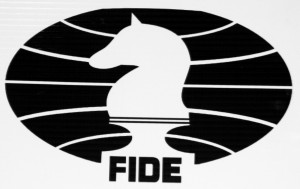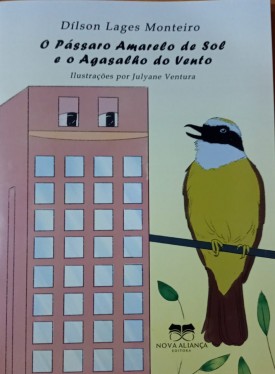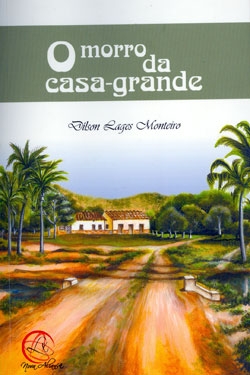
In 1971, the first official FIDE (Elo) rating list was published. There was only one play rated over 2700 (Fischer at 2760), and 14 other players rated 2600 or higher. The top 15 were Fischer (2760), Spassky (2690), Korchnoi (2670), Larsen (2660), Polugaevsky (2640), Petrosian (2640), Portisch (2630), Botvinnik (2630), Smyslov (2620), Tal (2620), Keres (2615), Geller (2615), Stein (2605), Hort (2605), Taimanov (2600), and Gligoric (2600). Anatoly Karpov was #39 at 2540. To make the top 100, you had to be rated 2480 or higher.
In 1972, There were 13 players rated 2600 or higher. The top 13 were Fischer (2785), Spassky (2660), Petrosian (2645), Polguaevsky (2645), Korchnoi (2640), Portisch (2640), Botvinnik (2630), Karpov (2630), Larsen (2625), Tal (2625), Smyslov (2620), Stein (2620), Keres (2600), and Hort (2600). To make the top 100, you had to be 2475 or higher.
In 1973, there were 15 players rated 2600 or higher. They included Fischer (2780), Karpov (2660), Tal (2660), Spassky (2655), Portisch (2650), Korchnoi (2650), Petrosian (2640), Botvinnik (2630), Polugaevsky (2625), Larsen (2620), Smyslov (2610), Geller (2605), Byrne (2605), Stein (2605), and Huebner (2600). To make the top 100, you had to be 2480 or higher.
In 1974, there were 18 players rated 2600 or higher. They included Fischer (2780), Karpov (2700), Korchnoi (2670), Spassky (2650), Portisch (2645), Petrosian (2640), Tal (2635), Larsen (2630), Polugaevsky (2630), Kavalek (2625), Mecking (2615), Huebner (2615), Geller (2610), Ljubojevic (2605), Hort (2600), Kuzmin (2600), Smyslov (2600), and Smejkal (2600). To make the top 100, you had to be rated 2490 or higher.
In 1975, there were 18 players rated 2600 or higher. They included Fischer (2780), Karpov (2705), Korchnoi (2665), Petrosian (2645), Tal (2645), Polugaevsky (2645), Portisch (2635), Larsen (2625), Spassky (2625), Ljubojevic (2615), Huebner (2615), Mecking (2610), Smyslov (2605), Hort (2600), Smejkal (2600), Geller (2600), Kuzmin (2600), and Byrne (2600). To make the top 100, you had to be rated 2490 or higher.
In 1976, there were 13 active players rated 2600 or higher. They included Karpov (2695), Korchnoi (2670), Polugaevsky (2635), Petrosian (2635), Spassky (2630), Portisch (2625), Larsen (2625), Geller (2620), Mecking (2620), Ljubojevic (2620), Tal (2615), Smejkal (2615), and Hort (2600). To make the top 100, you had to be rated 2490 or higher.
In 1977, there were 12 active players rated 2600 or higher. They included Karpov (2690), Petrosian (2645), Korchnoi (2645), Mecking (2635), Portisch (2625), Polugaevsky (2620), Hort (2620), Tal (2620), Ljubojevic (2615), Larsen (2615), Spassky (2610), and Huebner (2600). ). To make the top 100, you had to be rated 2495 or higher.
In 1978, there were 12 active players rated 2600 or higher. They included Karpov (2725), Korchnoi (2665), Spassky (2630), Mecking (2630), Portisch (2630), Tal (2625), Polugaevsky (2620), Petrosian (2620), Larsen (2620), Hort (2620), Romanishin (2610), and Ljubojevic (2605). To make the top 100, you had to be rated 2500 or higher.
In 1979, there were 12 active players rated 2600 or higher. They included Karpov (2705), Korchnoi (2695), Portisch (2640), Spassky (2640), Timman (2625), Polugaevsky (2625), Larsen (2620), Mecking (2615), Tal (2615), Petrosian (2610), Hort (2600), and Balashov (2600). To make the top 100, you had to be rated 2500 or higher.
In 1980, there were 13 active players rated 2600 or higher. They included Karpov (2725), Tal (2705), Korchnoi (2695), Portisch (2655), Polugaevsky (2635), Spassky (2615), Petrosian (2615), Ribli (2610), Gheorghiu (2605), Balashov (2600), Timman (2600), Kavalek (2600), and Huebner (2600). ). Kasparov was #14 at 2595. To make the top 100, you had to be rated 2500 or higher.
In 1981, there were 14 active players rated 2600 or higher. They included Karpov (2690), Korchnoi (2650), Portisch (2650), Spassky (2635), Huebner (2635), Kasparov (2625), Beliavsky (2620), Timman (2620), Polugaevsky (2620), Geller (2615), Larsen (2610), Andersson (2610), Ljubojevic (2605), and Balashov (2600). To make the top 100, you had to be rated 2495 or higher.
In 1982, there were 14 active players rated 2600 or higher. They included Karpov (2720), Timman (2655), Korchnoi (2645), Kasparov (2640), Portisch (2630), Spassky (2625), Huebner (2620), Beliavsky (2615), Andersson (2605), Larsen (2605), Petrosian (2605), Tal (2605), Polugaevsky (2600), and Ljubojevic (2600). To make the top 100, you had to be rated 2495 or higher.
In 1983, there were 13 active players rated 2600 or higher. They included Karpov (2710), Kasparov (2690), Ljubojevic (2645), Andersson (2635), Polugaevsky (2625), Huebner (2625), Portisch (2620), Tal (2620), Petrosian (2605), Timman (2605), Spassky (2605), Korchnoi (2600), and Seirawan (2600). To make the top 100, you had to be rated 2495 or higher.
In 1984, there were 17 players rated 2600 or higher. They included Kasparov (2710), Karpov (2700), Ljubojevic (2635), Korchnoi (2635), Andersson (2630), Vaganian (2630), Portisch (2625), Huebner (2620), Tal (2620), Miles (2615), Hort (2615), Spassky (2615), Polugaevsky (2615), Timman (2610), Ribli (2610), Nunn (2600), and Smyslov (2600). To make the top 100, you had to be rated 2490 or higher.
In 1985, there were 12 players rated 2600 or higher. They included Kasparov (2715), Karpov (2705), Timman (2650), Vaganian (2640), Beliavsky (2635), Portisch (2635), Korchnoi (2630), Polugaevsky (2625), Ribli (2615), Nunn (2615), Huebner (2605), and Smyslov (2600). To make the top 100, you had to be rated 2500 or higher.
In 1986, there were 14 players rated 2600 or higher. They included Kasparov (2720), Karpov (2700), Timman (2645), Vaganian (2645), Yusupov (2645), Korchnoi (2635), Huebner (2625), Beliavsky (2625), Miles (2610), Spassky (2610), Portisch (2610), Seirawan (2605), Ljubojevic (2605), and Tal (2600). To make the top 100, you had to be rated 2505 or higher.
In 1987, there were 12 players rated 2600 or higher. They included Kasparov (2735), Kapov (2710), Yusupov (2645), Sokolov (2645), Korchnoi (2625), Ljubojevic (2620), Huebner (2615), Short (2615), Portisch (2610), Tal (2605), Spassky (2605), Nikolic (2600), and Andersson (2600). To make the top 100, you had to be rated 2515 or higher.
In 1988, there were 18 players rated 2600 or higher. The top 10 included Kasparov (2750), Karpov (2715), Timman (2675), Beliavsky (2645), Korchnoi (2640), Short (2630), Tal (2630), Nikolic (2630), Speelman (2625), M. Gurevich (2625), and Vaganian (2625). To make the top 100, you had to be rated 2520 or higher.
In 1989, there were 28 players rated 2600 or higher. The top 10 included Kasparov (2775), Karpov (2750), Short (2650), Beliavsky (2640), Speelman (2640), Ivanchuk (2635), Salov (2630), Ribli (2625), Nunn (2630), and Andersson (2620). ). To make the top 100, you had to be rated 2530 or higher.
In 1990, there were 29 players rated 2600 or higher. The top 10 included Kasparov (2800), Karpov (2730), Timman (2680), Ivanchuk (2665), Salov (2645), Gurevich (2645), Beliavsky (2640), Short (2635), Andersson (2630), Korchnoi (2625), and Ljubojevic (2625). To make the top 100, you had to be rated 2540 or higher.
In 1991, there were 33 players rated 2600 or higher. The top 10 included Kasparov (2800), Karpov (2725), Gelfand (2700), Ivanchuk (2695), Ehlvest (2650), Gurevich (2650), Bareev (2650), Yudasin (2645), Salov (2645), Beliavsky (2640), Khalifman (2640), Kamsky (2640), and Andersson (2640). To make the top 100, you had to be rated 2545 or higher.
In 1992, there were 41 players rated 2600 or higher. The top 10 included Kasparov (2780), Karpov (2725), Ivanchuk (2720), Short (2685), Anand (2670), Gelfand (2665), Salov (2655), Kamsky (2655), Shirov (2655), and Yusupov (2655). To make the top 100, you had to be rated 2555 or higher.
In 1993, there were 54 players rated 2600 or higher. The top players included Kasparov (2805), Karpov (2725), Anand (2710), Ivanchuk (2710), Gelfand (2690), Kramnik (2685), Bareev (2670), Shirov (2670), Salov (2660), Georgiev (2660), Asmaiparaschvili (2655), Short (2655), and Kamsky (2655). To make the top 100, you had to be rated 2565 or higher.
In 1994, there were 56 players rated 2600 or higher. Kasparov was banned by FIDE, so the top 10 players were Karpov (2740), Shirov (2715), Anand (2715), Kramnik (2710), Ivanchuk (2710), Kamsky (2695), Gelfand (2685), Bareev (2685), and Epishin (2675). To make the top 100, you had to be rated 2565 or higher.
In 1995, there were 60 players rated 2600 or higher. The top 10 included Kasparov (2805), Karpov (2765), Salov (2715), Anand (2715), Kramnik (2715), Shirov (2710), Kamsky (2710), Ivanchuk (2700), and Gelfand (2700). To make the top 100, you had to be rated 2575 or higher.
In 1996, there were 65 players rated 2600 or higher. The top 10 included Kramnik (2775), Kasparov (2775), Karpov (2770), Kamsky (2735), Ivanchuk (2735), Anand (2725), Gelfand (2700), Topalov (2700), Shirov (2690), and J. Polgar (2675). To make the top 100, you had to be rated 2580 or higher.
In 1997, there were 66 players rated 2600 or higher. The top 10 included Kasparov (2795), Anand (2765), Karpov (2760), Kramnik (2740), Ivanchuk (2740), Topalov (2725), Kamsky (2720), Gelfand (2700), Shirov (2690), and Short (2690). To make the top 100, you had to be rated 2580 or higher.
In 1998, there were 75 players rated 2600 or higher. The top 10 included Kasparov (2825), Kramnik (2790), Anand (2770), Topalov (2740), Ivanchuk (2740), Karpov (2735), Shirov (2710), Beliavsky (2690), Svidler (1690), and Salov (2680). To make the top 100, you had to be rated 2585 or higher.
In 1999, there were 84 players rated 2600 or higher. The top 10 included Kasparov (2812), Anand (2784), Kramnik (2751), Shirov (2726), Morosevich (2723), Adams (2716), Ivanchuk (2714), Svidler (2713), Karpov (2710), and Topalov (2700). To make the top 100, you had to be rated 2586 or higher.
In 2000, there were 88 players rated 2600 or higher. Players over 2700 included Kasparov (2851 – highest ever), Anand (2789), Kramnik (2758), Shirov (2751), Morosevich (2748), Leko (2725), Kamsky (2717), Adams (2715), Ivanchuk (2709), Bareev (2709), and Topalov (2702). To make the top 100, you had to be rated 2596 or higher.
In 2001, there were 94 players rated 2600 or higher. Players over 2700 included Kasparov (2849), Anand (2790), Kramnik (2772), Adams (2746), Leko (2745), Morosevich (2745), Shirov (2718), Topalov (2718), Ivanchuk (2717), Gelfand (2712), Bareev (2709), and van Wely (2700). To make the top 100, you had to be rated 2596 or higher.
In 2002, there were 90 players rated 2600 or higher. Players over 2700 included Kasparov (2838), Kramnik (2809), Anand (2757), Morosevich (2742), Adams (2742), Topalov (2739), Ponomarov (2727), Ivanchuk (2717), Shirov (2715), Leko (2713), Gelfand (2708), Bareev (2707), and Smirin (2702). To make the top 100, you had to be rated 2596 or higher.
In 2003, there were 98 players rated 2600 or higher. Players over 2700 included Kasparov (2847), Kramnik (2809), Anand (2753), Topalov (2743), Leko (2736), Adams (2734), Ponomarov (2734), Bareev (2729), Shirov (2723), Grishchuk (2712), Akopian (2703), Khalifman (2702), Gelfand (2700), and Polgar (2700). To make the top 100, you had to be rated 2598 or higher.
In 2004, there were over 100 players rated 2600 or higher. There were 18 players rated over 2700. The top 10 included Kasparov (2831), Kramnik (2777), Anand (2766), Svidler (2747), Shirov (2736), Topalov (2735), Morosevich (2732), Polgar (2728), Ponomarov (2722), and Leko (2722).
In 2005, there were 16 players rated 2700 or higher. The top 10 included Kasparov (2804), Anand (2786), Topalov (2757), Kramnik (2754), Leko (2749), Adams (2741), Morosevich (2741), Svidler (2735), Polgar (2728), and Bacrot (2715).
In 2006, there were 19 players rated 2700 or higher. The top 10 included Kasparov (2812), Topalov (2801), Anand (2792), Svidler (2765), Aronian (2752), Kramnik (2741), Leko (2740), Ivanchuk (2729), Ponomarov (2723), and Gelfand (2723).
In 2007, there were 21 players rated 2700 or higher. Kasparov retired from chess. The top 10 included Topalov (2783), Anand (2779), Kramnik (2766), Mamedyarov (2754), Ivanchuk (2750), Leko (2749), Aronian (2744), Morosevich (2741), Adams (2735), and Gelfand (2733).
In 2008, there were 24 players rated 2700 or higher. The top 10 included Kramnik (2799), Anand (2799), Topalov (2780), Morosevich (2765), Svidler (2763), Mamedyarov (2760), Shirov (2755), Leko (2753), Ivanchuk (2751), and Aronian (2739).
In 2009, there were 31 players rated 2700 or higher. The top 10 included Topalov (2796), Anand (2791), Ivanchuk (2779), Carlsen (2776), Morosevich (2771), Radjabov (2761), Jakavenko (2760), Kramnik (2759), Movsesian (2751), and Leko (2751).
In 2010, there were 34 players rated 2700 or higher. The top 10 included Carlsen (2810), Topalov (2805), Anand (2790), Kramnik (2788), Aronian (2781), Gelfand (2761), Gashimov (2759), Ivanchuk (2749), Wang Yue (2749), and Svidler (2744).
In 2011, there were 39 players rated 2700 or higher. The top 10 included Carlsen (2814), Anand (2810), Aronian (2805), Kramnik (2784), Karjakin (2776), Topalov (2775), Grishchuk (2773), Mamedyarov (2772), Ivanchuk (2764), and Nakamura (2751). There were 244 players rated 2600 or higher.
In November 2011, for the first time in history, there were four players rated over 2800: Carlsen, Anand, Kramnik, and Aronian.
In 2012, there were 48 players rated 2700 or higher. The top 10 included Carlsen (2835), Aronian (2805), Kramnik (2801), Anand (2799), Radjabov (2773), Topalov (2770), Karkjakin (2769), Ivanchuk (2766), Morosevich (2763), Gashimov (2761), and Grishchuk (2761). Gelfand was #16, rated 2739.
As of May 28, 2012, the live ratings of the top 20 players in the world are: Carlsen (2835.0), Aronian (2823.2), Kramnik (2802.8), Radjabov (2784.0), Nakamura (2782.6), Anand (2780.2), Karjakin (2779.0), Caruana (2772.0), Morozevich (2769.0), Ivanchuk (2767.4), Grischuk (2761.0), Topalov (2752.0), Kamsky (2743.8), Svidler (2741.0), Wang Hao (2739.1), Tomashevsky (2738.0), Gelfand (2737.8), Gashimov (2737.0) , Jakovenko (2736.0), and Bologan (2732.4).
From 1971 to 2012, there have been 85 players who have been rated 2700 or over. There have only been 6 players that have ever been rated over 2800.
The top 10 FIDE rated players ever are: Kasparov (2851), Carlsen (2835), Aronian (2825), Anand (2817), Topalov (2813), Kramnik (2809), Morozevich (2788), Karjakin (2788), Ivanchuk (2787), and Fischer (2785).
The 12th game in the world championship between Anand and Gelfand was drawn in 22 moves. Anand was a pawn up and asked for a draw. Gelfand had 18 moves to make in 15 minutes. This world championship match has set a record for the lowest number of moves per game. They now go into tiebreaks with rapids games and blitz games on May 30. In rapid and blitz games, Over the years, Anand has beaten Gelfand 10 times and lost once, with 18 draws. The rapids tiebreak favors Anand. However, in the past 10 years, Anand has won one game and lost one game, with 6 draws in rapids games.
– Bill Wall"
(http://www.chessmaniac.com/index.php/2012/05/28/top-fide-chess-ratings-a-history/)

















